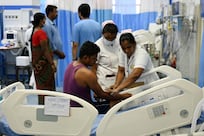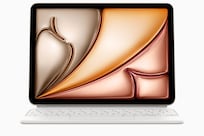There are no fewer 17 billion planets similar to our own in this galaxy alone, Nasa scientists told the 221st meeting of the American Astrological Society this week.
The number, announced by a Nasa project dubbed Kepler: A search for Habitable Planets, is thought-provoking in the extreme. It is not clear what proportion of those 17 billion planets are in the "Goldilocks" zone - not too far from their suns, not too close, but just right to sustain life as we know it. But if even a fraction of one per cent qualify, and if even a small proportion of those have water, then there will be plenty of places that could have life like ours - or sustain us if we could ever get there.
Of course we all know the complications of physically reaching another star system. Incomprehensible interstellar distances mean that even when the engineering challenges are solved, there would be many zeros on the price tag (possibly more zeros than there are in 17,000,000,000) of such a mission. We won't visit any of those planets anytime soon.
One step at a time. The Kepler project itself, for example, cost roughly $600 million (Dh2.2 bn), and that's just to look.
As kids, we all gazed into the dark sky, and wondered if anyone was gazing back at us. One day, though probably not soon, humankind may find an answer to that cosmic question.




